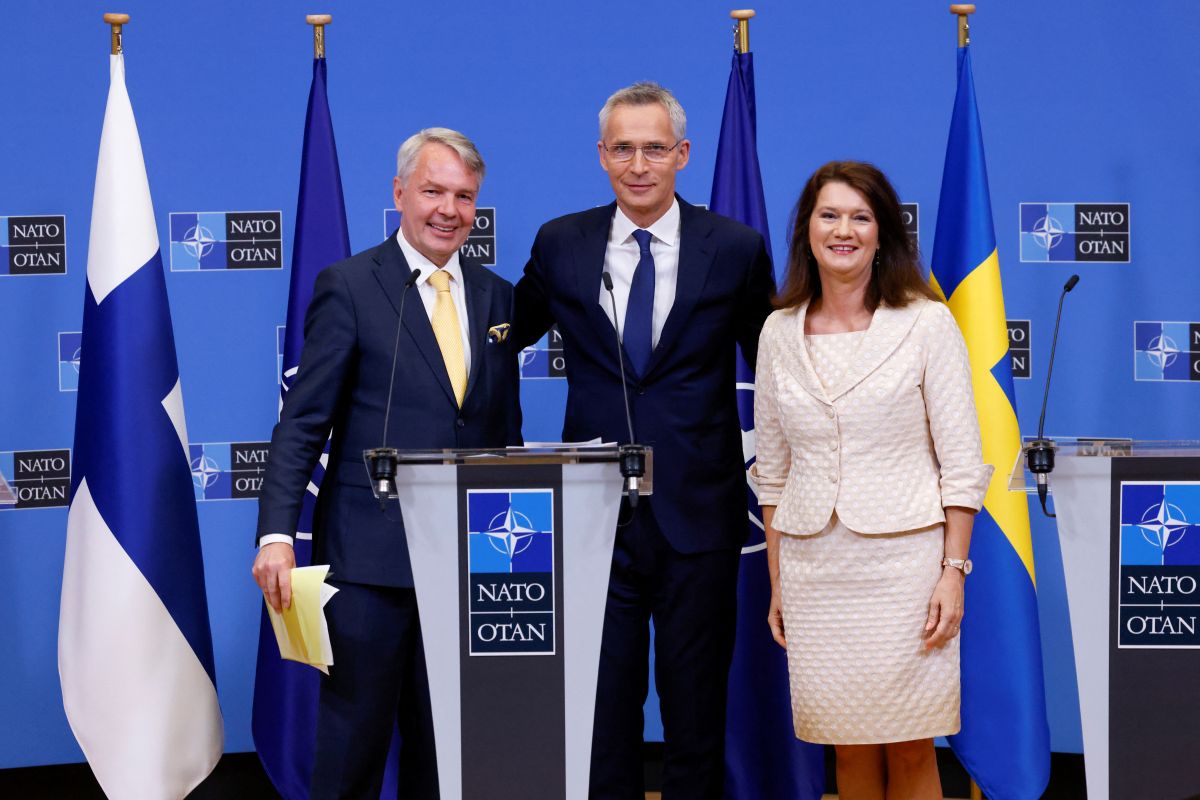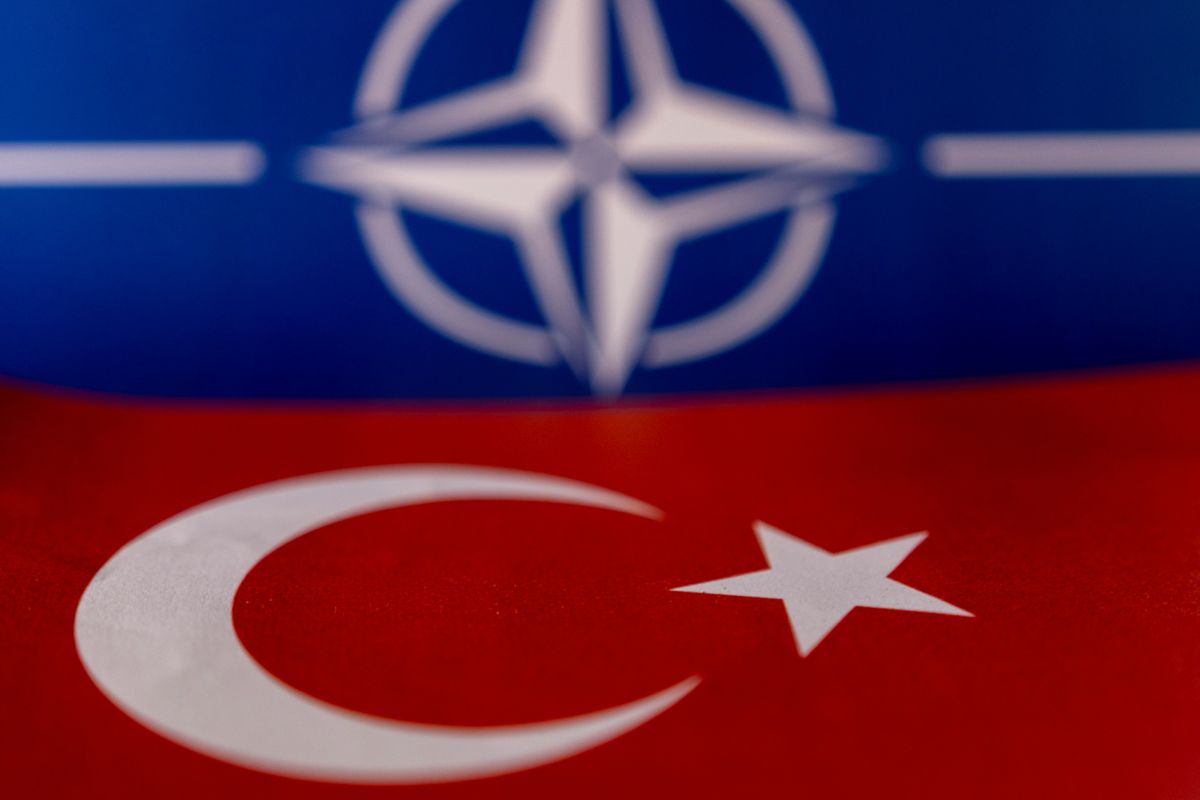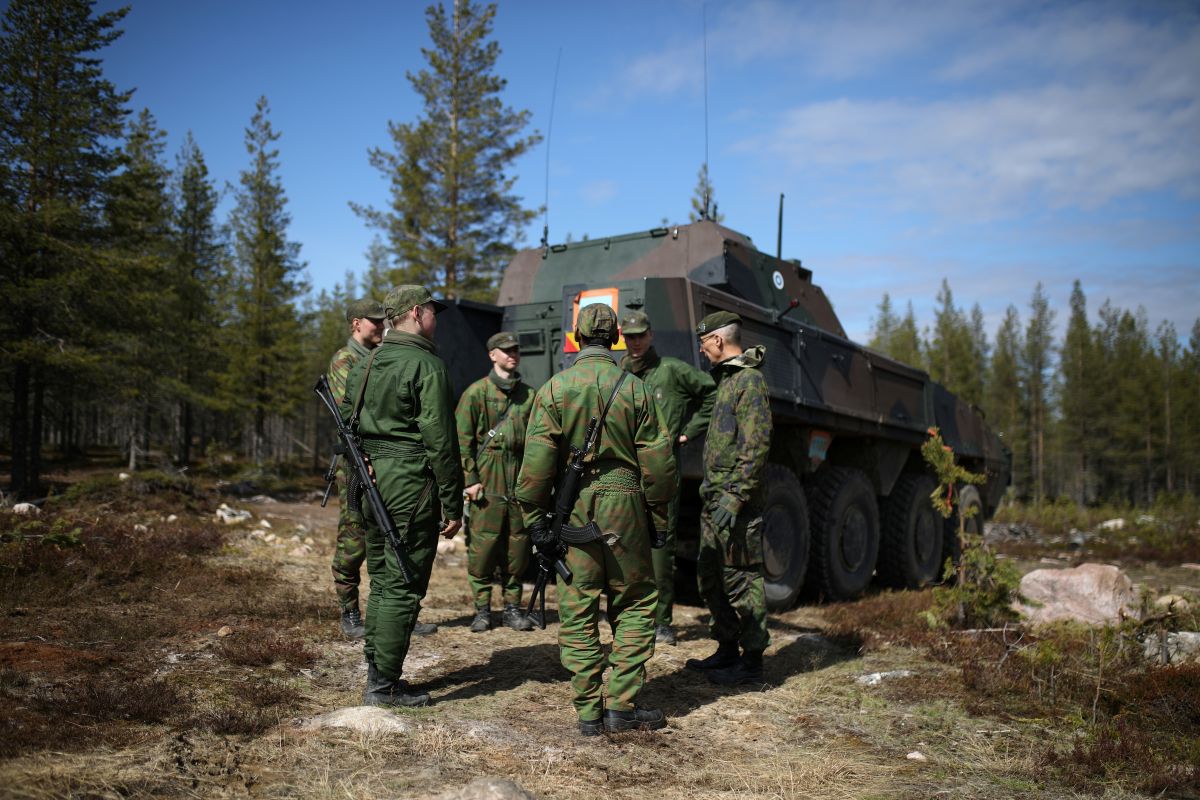Russia on NATO Enlargement to Sweden and Finland
On 18 May, Sweden and Finland applied to join NATO. Russia’s first reaction was tempered, but the Russian authorities later announced what they described would be an adequate response, as they see NATO enlargement as a threat to national security. To counter this development, Russia will focus on using diplomatic instruments, disinformation activities, and hybrid attacks, mainly because it has limited capabilities to carry out military provocations against either country with its forces committed to the war in Ukraine.
 YVES HERMAN/ Reuters/ FORUM
YVES HERMAN/ Reuters/ FORUM
Russia’s aggression against Ukraine has changed the Finnish and Swedish positions on NATO membership. Support for breaking with the policy of non-alignment has increased amongst the Finnish public from 24% to 82%, while the Swedish public opinion changed from 35% to 58% (data from January and May 2022). The majority of Finnish and Swedish political forces also support entry into the North Atlantic Alliance. Both countries now recognise that the existing cooperation and partnership with NATO is not a sufficient safeguard against the threat from Russia.
Russia on NATO Enlargement
Russia presents enlargement of the Alliance as a further step harming its security interests. The Russians repeatedly claim that they were promised in the past that the Alliance would not be enlarged, a manipulation of the truth, because the declarations at the time were about the narrower issue of not moving NATO’s warfare infrastructure from West Germany to East Germany (before Soviet troops were withdrawn from there). The negotiations took place when the USSR and the Warsaw Pact still existed The possibility that the Pact’s members, including Poland, would declare their willingness to join NATO only a few years later was not considered.
The rhetoric of the Russian authorities regarding “expansion of the Alliance” to the east helps it try to consolidate society around Vladimir Putin and his policy of confrontation with the West. It creates a sense of insecurity (“besieged fortress” mentality) among Russians towards an external enemy, in this case, mainly the U.S. In successive war doctrines of the Russian Federation (2000, 2010, 2014, 2015), increases in NATO’s military potential, including the approximation of military infrastructure in its member states close to Russia’s borders, was framed as a potential source of armed conflict. The argument concerning NATO infrastructure was used by the Russian authorities to justify the invasion of Ukraine on 24 February. Putin falsely accused the Ukrainian authorities of wanting to install NATO military infrastructure on Ukrainian territory. He argued that the possible deployment of missiles on Ukrainian territory would be dangerous for the Russian population, shortening the distance and flight time from Ukrainian territory to St. Petersburg and Moscow, crossing a Russian “red line”.
Russia’s Reaction to Sweden’s and Finland’s Decisions
In the days before the invasion, Sweden and Finland warned Russia that if it attacked Ukraine, they would revise their policy towards NATO. However, the Russian authorities ignored these signals, preferring not to explain the dilemma to their own citizens that the war in Ukraine would, instead of pushing away the prospect of NATO enlargement, bring it closer. Of the two countries, Finland is particularly important for Russia because enlargement of the alliance means it will have a border with western Russia that is twice as long as before (from 1,300 km to 2,600 km) and quite close to the St Petersburg region (within about 180 km of the city).
For this reason, the Russian Foreign Ministry issued a special statement to Finland on 12 May stressing that Russia would be forced to take “military-technical” measures to counter the threats to its national security resulting from the NATO enlargement. However, after a conversation between the Russian leader and the president of Finland (16 May), Putin offered reassurances that Russia did not see NATO enlargement to Finland and Sweden as a threat. This narrative, though, undermines the arguments put forward by Russia against possible Ukraine-NATO rapprochement. Putin made Russia’s response conditional on the military infrastructure Sweden and Finland would install on their territory. He was making it clear that Russia will try to influence these countries’ decisions regarding the construction of NATO military installations.
For the foreign audience, on the other hand, there were statements by Russian Deputy Foreign Minister Sergei Ryabkov, who said that Russia would not agree to Finland and Sweden joining NATO. According to him, this would be a path to escalation and a mistake with far-reaching consequences. Further announcements by Russian politicians concerned the possibility of deploying, among other things, hypersonic missiles and nuclear-capable missile warheads in the Kaliningrad region.
Perspectives on Russia’s Actions
The Russian authorities will continue to try to undermine Finland’s and Sweden’s entry into NATO. Just a few days after they applied for membership, Russia cut off natural gas supplies to Finland, which had relied on Russian supplies for more than 90% of its gas. Finland, however, managed to connect to the EU’s transit network, thanks to the Poland-Lithuania gas interconnector, which is expected to achieve full gas pipeline capacity by the end of October. In its effort to derail NATO enlargement, Russia will focus on disinformation campaigns and cyberattacks, which have already intensified against both Sweden and Finland. Disinformation campaigns will target the populations of both countries to challenge trust in the political authorities and reverse the trend of growing support for NATO entry. Actions may include references to the demands by Turkey concerning Kurds in Sweden, describing them as terrorists.
Russia will also seek to manipulate information in other NATO member states, in particular Turkey, where the enlargement process will be portrayed as provoking greater tensions with Russia or cynically strengthening the U.S. position in the world. The Russian authorities will continue to count on the Turkish side to raise the most objections, as they have since the beginning of Sweden’s and Finland’s accession processes. On 30 May, Putin spoke with Turkish President Recep Tayyip Erdoğan, among others, about Turkey’s planned military operation in northeastern Syria. Russia made it clear that it is ready to take into account some of Turkey’s demands, although it will rather try to influence the internal debate in the country. Russian disinformation may also target Poland, referring, for example, to the entry of Sweden and Finland into the Alliance as a current pulling Poland into a war with Russia.
As Finland’s and Sweden’s accession to NATO approaches, Russian violations of both countries’ airspace, limited military provocations on the Finnish-Russian border, and actions below the threshold of war, including the triggering of a migration crisis similar to the one in 2016, will be possible.
Conclusions
The membership of Finland and Sweden will give the North Atlantic Alliance a strategic and defensive depth that will benefit, among others, the Baltic States and Poland in the event of a possible armed conflict with Russia.
Putin’s seemingly conservative statements on the enlargement of NATO to include Sweden and Finland should be seen as an attempt to lower the significance of this action for Russia’s security, and a message directed at his own people. Internationally, Russia will want to manifest its reaction to NATO enlargement, but announcements of the deployment of hypersonic or nuclear weapons to the Kaliningrad region will not change the strategic situation. Russia has had dual-use systems capable of carrying nuclear payloads there for many years. Also, energy pressure against Sweden and Finland is of limited importance. Sweden is self-sufficient in energy, while Finland broke its energy dependence on Russia in May (it also terminated its nuclear power plant project with Rosatom).
Due to its military involvement in Ukraine, Russia is currently unable to open a second front of military action in Europe, in this case in the Baltic Sea region. However, until Finland and Sweden join the Alliance, provocations of a military nature are possible, such as against Gotland or the demilitarised Finnish Åland Islands. Guarantees given to Finland and Sweden by the UK, the U.S., and Poland are therefore important in this respect. The Swedish Armed Forces have adjusted their preparedness measures and strengthened their presence on Gotland. In February, Sweden, Finland, and NATO launched the Alliance’s Enhanced Interaction Mechanisms, including intensified information exchange, coordination of activities, and enhanced exercises.
From Poland’s point of view, it is necessary to increase its and NATO’s strategic communication capabilities to counter Russian disinformation and work with allies to accelerate the process of Finland’s and Sweden’s NATO membership, particularly with regard to Turkey’s concerns and support.



_sm.jpg)

